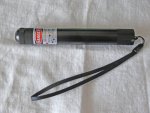IgorT
0
- Joined
- Oct 24, 2007
- Messages
- 4,177
- Points
- 0
Yeah, i meant with the laser.. Charge batteries, power up, write down current.
Use laser for some time and write down the current again. And then again.. Measure the current by replacing the tailcap with your DMM in the 20A (or highest) range...
Then turn the pot counter clock wise JUST A LITTLE, put laser back together and measure the current again, by replacing the tailcap with the DMM.
Let me know what you find, so we can figure it out.
Use laser for some time and write down the current again. And then again.. Measure the current by replacing the tailcap with your DMM in the 20A (or highest) range...
Then turn the pot counter clock wise JUST A LITTLE, put laser back together and measure the current again, by replacing the tailcap with the DMM.
Let me know what you find, so we can figure it out.




